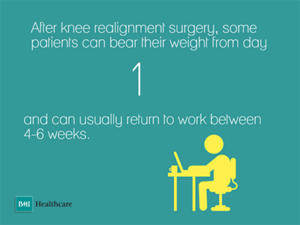Here are my 5 tips to recovery for active individuals who wish to get back to the sport of training that they enjoy so much at the best level possible for them. Recovery according to sports physiology literature is a return to baseline. This could be many things depending on what activity you choose to partake in, such as your vertical jump score, squat max weight, 10k run time or agility test results. Whatever your aim you should consider the following options.
1) Foam rolling
Probably what most people think of when they look at recovery options is a foam roller, pretty much every gym has foam rollers in the corner now, but how effective are they?
In one study foam, rolling did not improve most measures of recovery when compared to the non-foam rolling group following a high volume of sprinting exercises. These measures consisted of a range of motion at the hip, agility, muscle soreness, vertical jump test and hamstring muscle length.
In other studies, foam rolling has been shown to improve range of motion prior to exercise assisting athletes to get into appropriate positions and reduce the risk of injury and improve our recovery when done after training. It is not noted to improve your performance unless you’re limited by a poor range of movement that you need to succeed in that given activity.
Foam rolling is a good option to be utilized for recovery but shouldn’t be used as a standalone method for recovery as better results can be seen using a mixture of methods. When you foam roll the pressure you apply can be moderate and doesn’t have to be a 10 out of 10 pain to yield the best results, aim for a 2-6 on the pain threshold on a 1-10 scale as more pain hasn’t shown benefits in recovery.
With mixed reviews on the benefits of foam rolling both giving positive results and minimal benefits in other reviews we shouldn’t put all our eggs in one basket when it comes to foam rolling. Yes it’s a great tool to play with and see how you get on with it, perhaps practically certain muscle groups are easier to work into and you notice a difference but others aren’t so effective because they’re difficult to work into by yourself.
2) Adequate nutrition and hydration
Without getting into the finer details with sports recovery as that could be a post by its self and is very specific to the individual’s needs I just want to outline some basics from a recovery standpoint when it comes to nutrition and hydration.
Firstly ensure you’re eating an adequate amount of protein per day for the amount of exercise being performed as well as your body weight. It is commonly known that protein is the building block used for growth and repair, if we’re exercising frequently then the body is put under stress and into a catabolic state, therefore, the requirements for protein has risen. The timing of the protein isn’t hugely important as long as we hit the required amount on a daily basis.
Secondly, ensure we are getting enough carbohydrates to replenish our glycogen stores as we deplete these when we exercise. The timing of carbohydrates again isn’t a huge issue unless you’re advanced and train twice a day in which case timing of carbs may play a role in performance or you’re losing weight and in a calorie deficit which probably means eating fewer carbohydrates as a result. In this case, to support performance it is wise to eat a large number of your daily carbs in the meal before you train to provide you with enough energy.
It’s worth noting though if your aim is to lose weight depending on how advanced you are, at some point performance will certainly be affected.
Hydration and electrolytes are essential for optimal human performance, and so is having enough available fuel for the working muscles. So, if you exercise for 60 minutes plus like you would in endurance activities, exercise classes, long gym sessions that are high volume, sport or hiking then consider supporting your activities with fluids and electrolytes. Electrolytes are an essential component of staying hydrated, effectively allowing your muscles to absorb liquid, contract efficiently and ensure you reduce the chances of getting cramp and hypernatremia.
3) Stretching
Static stretching as long as it’s not performed before exercise has shown small to mild improvements in performance. In short, holding a stretched position causes a decrease in stiffness of the musculotendinous unit, which compromises the benefits of the stretch reflex, and longer stretches decrease performance more than short or dynamic variations. This does not mean static stretching is bad though as there is a time and a place for different types of stretching to be used such as before workouts dynamic stretching is usually suggested going through 4-6 exercises at the joint about to be exercised for 10-15 repetitions, while post exercise or away from exercise static stretching that’s held for an accumulative 3-5 minutes per stretch / joint at a moderate discomfort done 2-4 times per week can show improved performance in the long run.
Again don’t expect huge improvements in performance or recovery but for a low-risk method that doesn’t cost anything static stretching can give a moderate return on your level of investment. Adding resistance bands to static stretches can improve their benefit and practicality if you feel you want more from the stretch, most gyms have these lying around.
4) Low-intensity steady state cardio i.e. walking or cycling
The improved blood flow to the exercised/damaged area can support the recovery process without causing any additional damage to the tissue. We have seen 15-30 minutes very low-intensity cardio around your main training session provide very good results in overall recovery.
Blood transports the nutrients required to rebuild body tissue and helps expel metabolic waste from tissues, including muscle. Speeding up the body’s recovery process allows muscles to adapt and respond quicker, meaning an athlete can return to training earlier to improve performance.
5) Sports massage therapy
The sports massage is recognized by the fitness industry as a needed component of a training regime. This gives athletes the ability to enhance prep leading up to a competition, and improve recovery between training sessions giving more high-quality intensive training sessions. For the every day active individual sports massage is just as beneficial when we look at recovery from their training, and the injury prevention aspects. The weekend warriors often find they go to work all week sat down in a chair hunched over a computer and then find themselves picking up injuries when they train or perform their chosen activity because of poor structural balance and a lack of mobility.
A study in 2010 in America found athletes who had massages before and after strength training saw a definite decrease in muscles soreness after exercise.
Additional options:
– Cold water emersion
– Magnesium spray
– Compression garments





